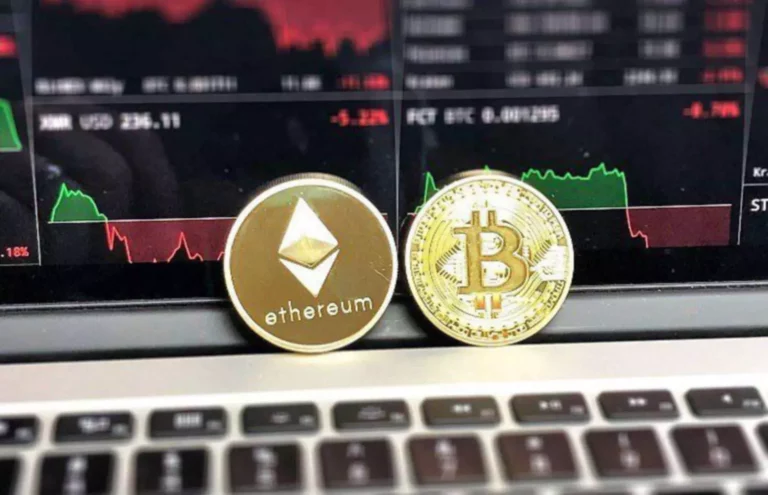It’s important to think about the overall liquidity profile, together with main and secondary market liquidity, rather than relying exclusively on the bid-ask unfold. In one state of affairs, it has a excessive buying and selling volume and a good bid-ask spread of $0.02, indicating high liquidity, which implies shares may be simply bought or sold without considerably affecting the value. Alternatively, a stock for ABC, Inc. has a low buying and selling volume and a wide bid-ask unfold of $2, indicating low liquidity. Here, buying or promoting ABC shares would not obtain prices as favorable, and trading massive quantities might noticeably change the worth. Through this simplified example, it’s evident how liquidity impacts the ease of trading and the stability of the market price, highlighting its importance in investment choices. Liquidity is among the most important options attracting a various group of buyers to trade traded funds (ETFs).
ETFs rely on a unique creation and redemption mechanism that gives major market liquidity. Authorized members (APs) can create or redeem ETFs and trade the “baskets” of the ETF’s underlying securities for brand spanking new ETF shares from the fund issuer. Unlike ETFs, that are traded on exchanges like shares, mutual fund shares are purchased and bought instantly with the fund at the day’s closing NAV. The real-time trading feature of ETFs offers intraday liquidity, allowing buyers to execute trades throughout the trading day. Alternatively, mutual funds offer end-of-day liquidity, with all orders processed at the closing NAV. This fundamental distinction makes the liquidity experience between ETFs and mutual funds distinct, catering to different investor preferences and techniques.

Secondary market liquidity is set primarily by the amount of ETF shares traded. One of the vital thing options of ETFs is that the provision of shares is flexible. In other words, shares can be “created” or “redeemed” to offset modifications in demand. ETF creation and redemption is aided by tapping into the liquidity of an ETF’s underlying portfolio of securities.
By-product Trading Desk
Given their relationship with market individuals and insight into major and secondary market activity, they’re a important resource for traders trying to execute giant ETF trades efficiently. Liquidity is likely considered one of the most necessary options of exchange-traded funds (ETFs), although regularly misunderstood. An ETF’s liquidity refers to how easily shares could be bought and sold with out impacting the ETF’s market value. An ETF’s liquidity is crucial as a result of it impacts buying and selling costs and helps decide how carefully the ETF’s price tracks its underlying belongings.
Bid-Ask Spread The distinction between the best worth a buyer is keen to pay for an asset and the lowest https://www.xcritical.com/ price the seller will accept to sell. Bid-ask spreads are a key measure of the liquidity of an asset or security.
- It is constructed using the implied volatilities of a variety of S&P 500 index options.
- The purpose is then to execute within the shortest time potential both when it comes to detecting worth discrepancy and in phrases of execution.
- At the tip of each trading day, the ETF issuer publishes the Portfolio Component List, which includes the security names and corresponding quantities that comprise the ETF basket for the next trading day.
- In a common sense, a liquidity supplier connects clients with the establishments that problem an asset.
- While the shares of ETFs are tradable on secondary markets, they may not readily commerce in all market conditions and may commerce at important reductions in durations of market stress.
It shouldn’t be thought of a solicitation to purchase or a proposal to promote a security. It doesn’t bear in mind any investor’s explicit investment objectives, strategies, tax standing or funding horizon. No, solely APs are allowed to transact directly with the ETF issuer to create and redeem shares.
Due to LPs, shares are suggested by their true worth, and through so-called stress intervals, liquidity providers return costs back in the line of true value. The most reputable liquidity suppliers have servers positioned in main information facilities (e.g. LD4, FR5) close to the most important exchanges that ship ultra-low latency & fast execution pace how to choose liquidity provider. Liquidity suppliers such as X Open Hub make money by processing orders. If there are not any orders (order flow) routed to them, then they can’t make any cash. As a result, liquidity suppliers compete against each other for order move, and every financial establishment chooses which LPs get which orders.
Who’re The Etf Issuer’s Liquidity Players?
In this case, the supplier guarantees value feeds and the potential of executing leveraged CFD orders. Brokers rely on liquidity suppliers to provide easy buying and selling situations and asset availability. Investors typically incur the cost of the spread between the costs at which shares are purchased and bought. Buying and promoting shares may end in brokerage commissions, which is ready to scale back returns. ETFs depend on arbitrage activities to maintain the fund’s market price according to its NAV. And so, when designing an index for an ETF to trace, the product growth staff ensures the ETF basket is liquid sufficient to efficiently handle the fund from a liquidity perspective.
The profiles of these two comparable ETFs can result in completely different relative ranges of liquidity. Investors might discover it easier and less expensive to commerce shares of Alpha ETF than Beta ETF, despite both ETFs monitoring the identical index. Read on to understand how ETF liquidity works and what it means for merchants and buyers. Last but not least, the execution system has to satisfy excessive standards, especially during market knowledge releases and surprising occasions similar to SNB. The dealer should be able to check execution using automated trading software program, that permits him to build detailed statistics and looking for the opinions among present shoppers of a specific LP. When the ETF shares are offered and if the ETF was held in a taxable account, the investor will owe taxes on any capital positive aspects.
Tectonic Shifts Create New Alternatives
SSGA Intermediary Business offers a number of products and services designed specifically for numerous categories of traders. The data provided on the Site isn’t supposed for distribution to, or use by, any person or entity in any jurisdiction or nation where such distribution or use would be contrary to law or regulation. Secondary Market The market by which ETF shares or common shares of public corporations that at present exist are traded on exchanges between buyers. Exchange Traded Fund (ETF) An ETF is an open-ended fund that provides exposure to underlying investment, usually an index.

ETFs that spend cash on less liquid securities, corresponding to real estate or assets from emerging markets, are most likely to have less liquidity. Generally, ETFs that invest in large-cap, domestically traded companies are probably the most liquid, as these shares are typically the most liquid. Many ETFs are open-ended funds, meaning they will constantly adapt the variety of outstanding shares. Unlike closed-end funds, which have a exhausting and fast number of shares, open-ended ETFs can regulate their share depend based mostly on demand and provide dynamics. ETFs are topic to market fluctuation and the risks of their underlying investments.
Market makers revenue from the spreads of their bid/ask quotes, in addition to arbitrage alternatives between an ETF’s NAV and its market price. This additionally helps with value discovery and retains the ETF prices consistent with its NAV. APs are the one counterparties allowed to enter creation and redemption orders with the fund. ETF liquidity is based on the dynamics in the vendor and secondary markets. Dealers performing as APs can create and redeem ETF shares to satisfy provide and demand adjustments within the ETF and maintain its market worth according to its NAV. On the secondary market, ETF shares with greater trading volume and tighter spreads are often extra liquid.

The AP can offload a large basket of shares (i.e., redeem) or acquire a big basket of shares (i.e., create) instantly from the ETF issuer. Typically, the AP is doing enterprise within the main market to satisfy provide and demand imbalances from the buying and selling that occurs in the secondary market. Ultimately the primary market helps present for extra liquidity in the secondary market. The first is “on‑screen” liquidity, which buyers and market participants can see and supply (also often recognized as the ETF secondary market).
The AP receives a basket of the underlying clean tech shares in trade. This course of helps to absorb the excess supply of ETF shares available in the market, supporting the ETF’s value and preventing it from plummeting. Most ETF orders are entered electronically and executed within the secondary market where the bid/ask prices that market individuals are keen to buy or promote ETF shares at are posted.
Feeds should reflect costs from the interbank foreign change markets and underlying devices from a listing of stock exchanges. Retail clients and brokers should have the chance to compare these prices in a handy way. Access to historical market knowledge and the tick data is an important a part of the answer as nicely as a complete order guide offered via FIX protocol or buying and selling terminal supplied by the LP. When selecting an ETF, investors should contemplate components such as its level of property, buying and selling volume, and underlying index.

The sudden surge in demand may drive the share price of the ETF sky-high, deviating from the actual worth of the underlying property or its NAV. A liquidity supplier (LP) is responsible for the market stability and minimal gaps between the ask and bid costs. Furthermore, providers ensure investors’ bids or ask presents are executed immediately, otherwise, a purchaser or vendor wants to attend for the response of natural patrons and sellers, dealing with attainable losses. Liquidity suppliers should supply stable and dependable feeds without any spikes or gaps on the charts.
At the end of every buying and selling day, the ETF issuer publishes the Portfolio Component List, which includes the security names and corresponding portions that comprise the ETF basket for the following buying and selling day. Buyers and sellers of ETF shares place their orders via registered brokers, exchanging money for ETF shares when buying and vice versa for promoting. NAV supplies a gauge of what an ETF or mutual fund’s share is value intrinsically, making it a fundamental metric for fund investors. According to the paper, the HKMA and SFC are giving the new pointers in response to “a rising quantity of requests” from providers engaged in supplying digital asset-backed solutions to their clients. A bid-ask spread is the distinction between the best worth that a purchaser is willing to pay for an asset and the bottom value that a seller is willing to simply accept.

